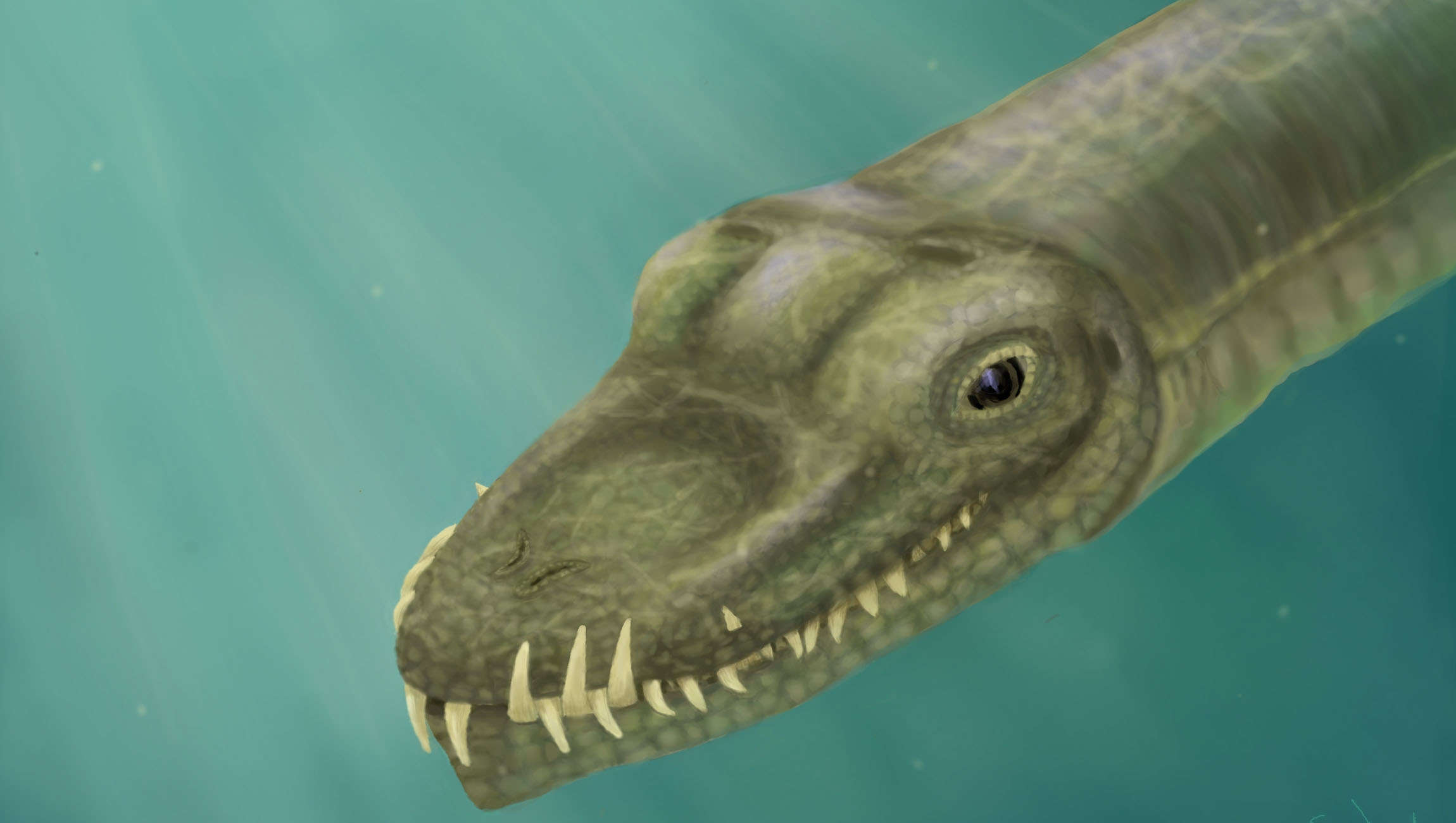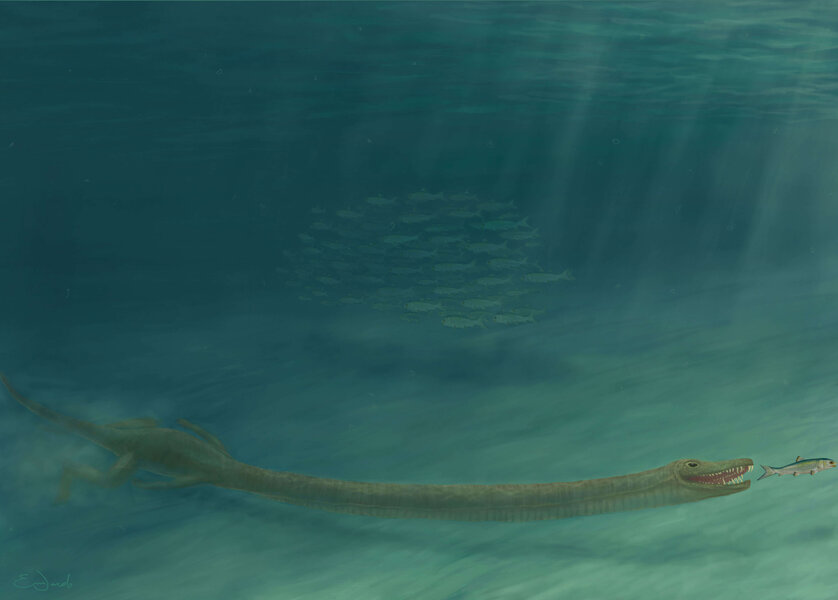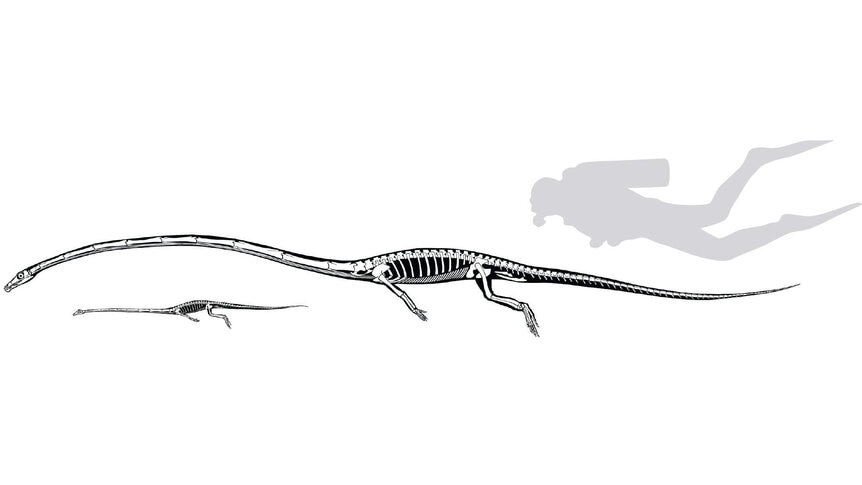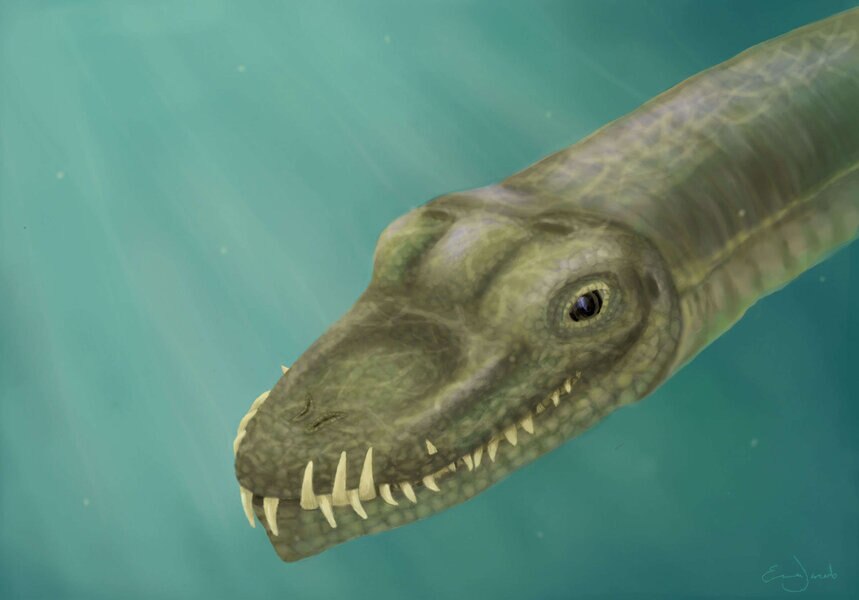Create a free profile to get unlimited access to exclusive videos, sweepstakes, and more!
How this hydra of a sea monster got its freakishly long neck

It’s that time of year when (at least in non-pandemic times) going to the beach and landing your foot on a sharp piece of shell is all but inevitable, but there were things lurking in Triassic seas that you definitely wouldn’t want to step on.
Tanystropheus hydroides was one of those things. Nobody names a creature after the legendary hydra without a valid reason, and this actual sea monster that lived some 242 million years ago would hide its disproportionately long neck in the murk while waiting to snap up unsuspecting prey. Even though there was a small head at the end of that neck, its jaws full of sharp, curved teeth were more than enough to snap up fish and squid that swam by its hiding place. But why was this creature’s neck three times the size of its body — and so stiff?
“The difference between Tanystropheus and these other marine reptiles is that the neck of Tanystropheus was elongated, not by adding more neck vertebrae, but by extremely elongating the ones it already had,” paleontologist Stephan Spiekman, who led a study recently published in Current Biology, told SYFY WIRE. “The most likely hypothesis is that these long necks and small heads were used by all these long-necked marine reptiles to get their head close to its prey without getting spotted, which one can easily imagine in murky water. Then you wouldn't need to bend your neck that much.”
Bizarrely long necks and small heads were apparently a thing among prehistoric marine reptiles. Spiekman has seen this phenomenon before, in the Chinese Dinocephalosaurus, a close relative of Tanystropheus. Then you have all the plesiosaurs that also terrorized ancient waters. The long vertebrae that made the neck of Tanystropheus so stiff seem to be a disadvantage, but they were actually an asset. Plesiosaurs have also been found to have relatively stiff necks, despite having a greater number of vertebrae that were also shorter. Besides using its surroundings for camouflage as it lay low, Spiekman believes Tanystropheus probably didn’t need to bend its neck much anyway.
“It might also be impossible or very complicated from a biomechanical perspective to have such a long neck, and have it be flexible. You can't have it all,” he said.
What really separates this sea monster from the plesiosaurs that were able to effortlessly glide through the water with their flippers was its awkward legs and feet, which were just not suited for swimming. Flippers might have not been all that useful to Tanystropheus. There has been plenty of evidence that creatures such as whales, and all marine mammals and reptiles, evolved webbed feet and gained strength in their tails for optimal swimming once they made the transition to water. However, there have been a few rebels who stayed in shallower hangouts and saw no evolutionary pressure to take the plunge into the open ocean.
“Even the most ocean-going crocodile today, the saltwater croc, generally stays close to the shore,” Spiekman said. “I would argue that the same case can be made for Tanystropheus. The long neck probably evolved after it started living at least partially in the water, and once this neck was so long, it didn't need to evolve flippers because it could already feed, breed, and stay out of trouble successfully enough.”
While Tanystropheus hydroides was a monster (see above), it actually diverged from smaller relatives before it evolved into a living horror movie prop. The fossils of these Tanystropheus species were thought to be the remains of juveniles until the size and number of growth rings, which form when bone growth experiences a drastic slowdown, indicated that they were actually adults. They just didn’t have the same cravings. While some of the reasons why the massive hydra diverged remain unknown because of a lack of fossilized specimens, the answer to why Tanystropheus hydroides got supersized might lie in its ferocious teeth and what ended up trapped in them.
“What we do know is that the species differ in two main ways, first in their size, and second in their dentition. This difference is clearly an adaptation for feeding on different food sources,” Spiekman explained. “The teeth of the small species clearly indicate it ate soft-shelled animals, probably mostly crustaceans. These generally weren't that big, so there was no evolutionary incentive to grow bigger. The large species clearly ate fish and squid, which are bigger prey. This therefore might have made it advantageous for Tanystropheus hydroides to grow bigger in order to catch them more efficiently.”
Maybe stepping on a shell is an unpleasant side effect of beach days, but if that happens again (whenever you can safely go to the beach), just be glad it wasn’t the head of a hydra.

















